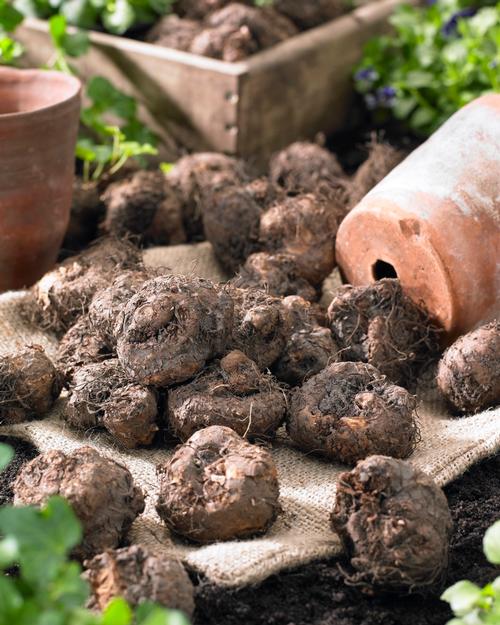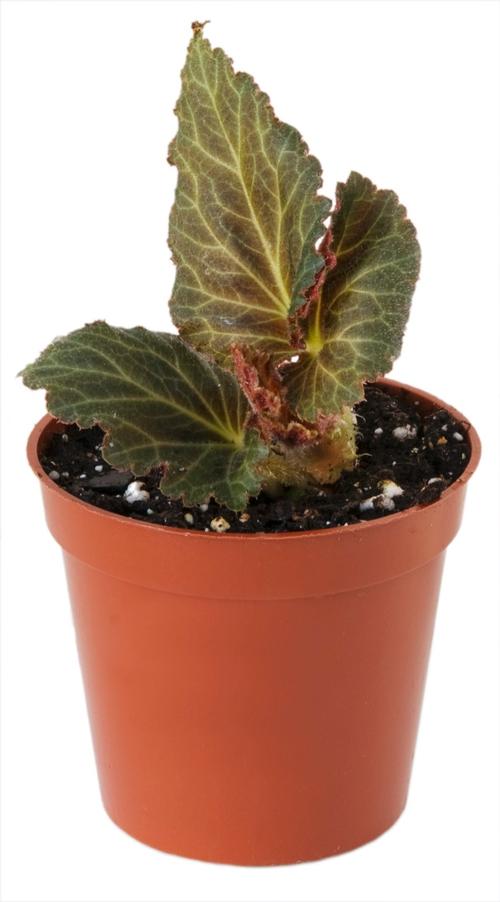HOW TO START TUBEROUS BEGONIAS INDOORS
Tuberous begonias light up shady patios, porches and gardens with their big, brilliantly colored flowers. These heat-loving summer bulbs can be grown in hanging baskets, window boxes, pots and garden beds, and will bloom non-stop from summer through fall.

Growing tuberous begonias is easy. Each tuber will produce a good-size plant with dozens of blooms. Like other plants from tropical climates, begonias grow best in warm weather. If you start the tubers indoors, several months before the last frost, your plants will begin blooming in early summer. The closer it gets toward spring, the more quickly the tubers will sprout.
START BEGONIA TUBERS 8 to 12 WEEKS BEFORE THE LAST FROST
Use your growing zone to find the proper date for starting the tubers indoors. Don't know your zone? Click here.
ZONE 10: Indoors: Late December; Outdoors February
ZONE 9: Indoors: Early January; Outdoors: Early March
ZONE 8: Indoors: Early February; Outdoors: Early April
ZONE 7: Indoors: Late February; Outdoors: Late April
ZONE 6: Indoors: Mid-March; Outdoors: Mid-May
ZONE 5: Indoors: Mid-March; Outdoors: Late May
ZONE 4: Indoors: Early April; Outdoors: Early June
ZONE 3: Indoors: Early April; Outdoors: Early June

WAKE UP THE TUBERS
Like most bulbs, tuberous begonias have a winter resting period. During this time, the tubers are usually kept cool so they stay dormant. If you purchase begonia tubers in the spring, they may have only recently come out of refrigeration. To help them wake up, put the tubers in a 70°F room where they'll get bright indirect light. After a couple weeks, you should see the first sprouts, and that means it's time to plant.
USE POTS OR TRAYS
Begonia tubers are usually started individually in small, 3" pots. If you're starting a lot of tubers, consider growing them together in a shallow nursery tray.
Roots will develop on all sides of the tuber, so completely covering it with soil will encourage a better root system. Start by filling a pot or tray with 2 to 3” of moistened growing mix. Place a tuber on the soil surface, with the hollow side up and cover it with another 1" of soil. Water thoroughly.
KEEP THE TUBERS WARM AND COZY
Begonia tubers grow more quickly in a warm, humid environment. To increase humidity, you can cover the pots loosely with a clear plastic bag. Begonia tubers can also be started inside a terrarium. Though begonias like humidity, avoid overwatering. Wet soil can cause the tubers to rot.
Once the first leaves appear, move the pots to a warm sunny windowsill or put them under grow lights. When the tubers have one or two good-size leaves, you can transplant them. Use a 6” pot for 1 tuber, an 8” pot for 2 tubers and a 12” pot for 3 tubers.
Allowing all the stems to develop will give you a full, bushy plant with lots of flowers. If you are willing to have fewer flowers in favor of bigger blooms, you can pinch off all but a few of the young stems.
PLANT OUTDOORS FOR MONTHS OF COLOR
When springtime temperatures have settled and all danger of frost has passed, your begonias can be moved outdoors. If you are transplanting them into larger pots, be gentle, as it's easy to break the stems. Adding compost to the growing mix will help retain moisture and add valuable nutrients. Fertilize your begonias every two weeks throughout the growing season, using a liquid, all-purpose fertilizer. Water as needed. It's best to let the top couple inches of soil get dry between waterings.


